Stages of Periodontal Disease
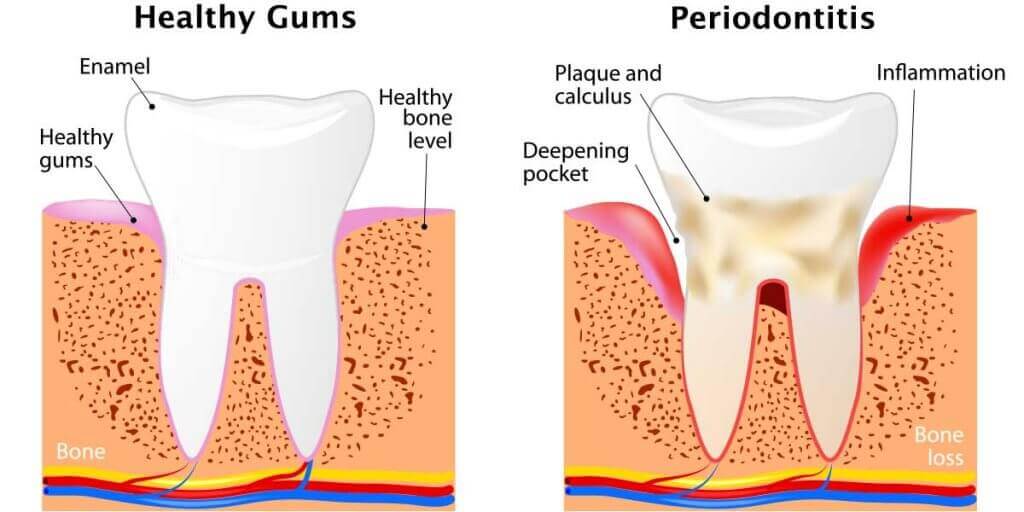
Periodontal Disease
Gum disease is one of the leading causes of tooth loss. Gum disease has two primary stages. If diagnosed and treated in the first stage, the condition can be reversed and tooth loss can usually be prevented. In order to prevent gum disease, practice good oral hygiene and visit your dentist for cleanings and check-ups twice a year.
If gum disease is detected during your visit, we will instruct you on steps regarding improved home care and recommend specialized treatment options in our office to eliminate the disease.
Gingivitis – Early Stage of Gum Disease
This stage only affects the soft tissue of the gums, and the patient may not experience any discomfort. Although the symptoms may be very mild, it is important to diagnose gum disease in this early stage before it progresses to periodontitis.
Symptoms of Gingivitis may include:
- Swollen or bleeding gums
- Bad breath or a metallic taste in the mouth
- Receding gums
- Increasing spaces between teeth
Periodontitis – Advanced Stages of Gum Disease
Periodontitis is the name for more advanced periodontal disease and if permitted to progress to this point, not only the gums are affected but the bone structures supporting the teeth will be compromised.
Without regular dental visits, symptoms may not be noticed until moderate periodontitis is present.
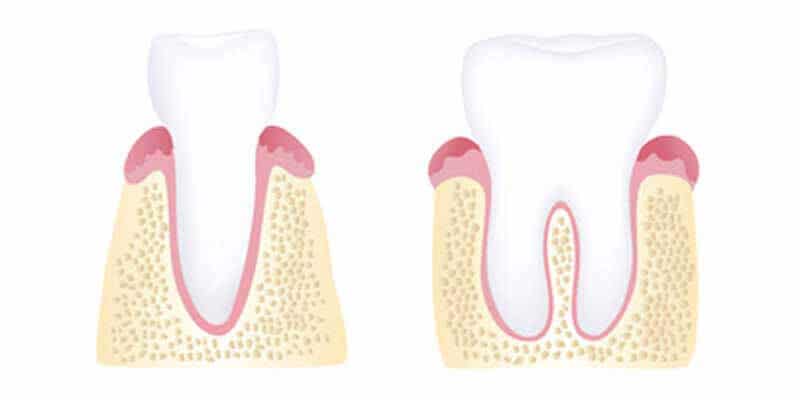
Healthy Gums
Firm, pink, gums attached to the teeth and supported by firm dense bone are the indicators of healthy gums and teeth that have the strong support they need.
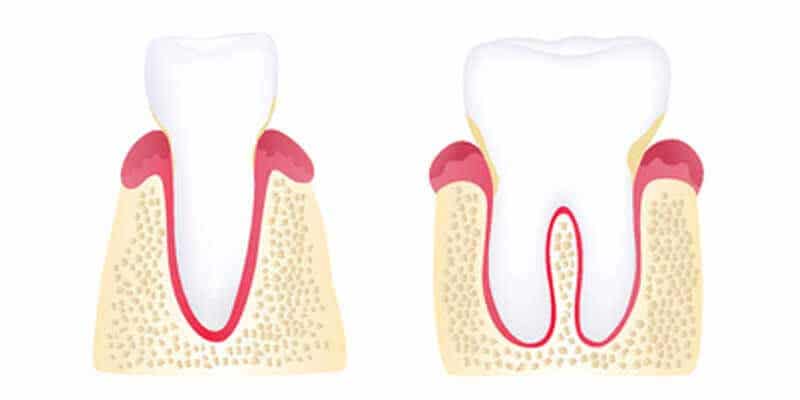
Gingivitis
A build-up of bacteria causes Gingivitis. In its early stages, inflammation around the gums is observable, with gum tissues appearing red and swollen. Gums that are easily irritated or that bleed during tooth brushing indicate the presence of Gingivitis. Removal of the plaque buildup is necessary to prevent the development of gum disease.
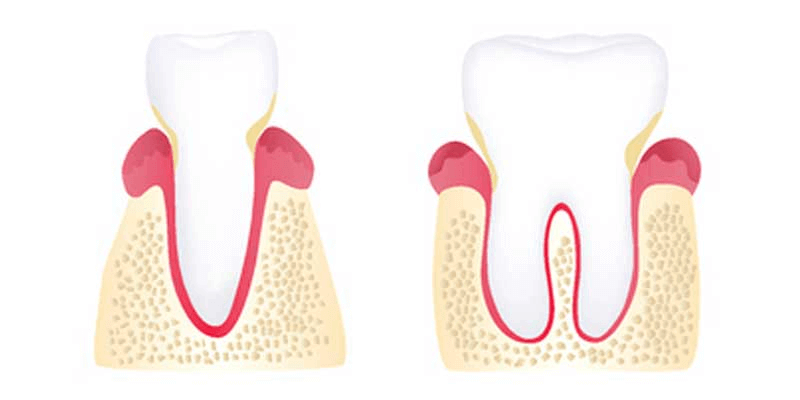
Early Periodontitis
As the gums become more inflamed, they start to pull away from the teeth, forming spaces known as periodontal “pockets.” Food, bacteria, and plaque begin to collect in the pockets, leading to infection. The surrounding bone becomes damaged both by bacterial toxins and by the immune system’s response to infection.
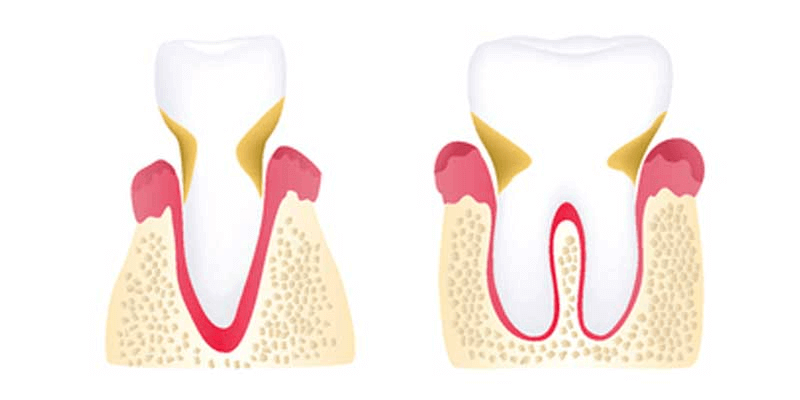
Moderate Periodontitis
The symptoms of periodontitis become more severe as inflammation spreads, and some discomfort may occur. More supporting bone is lost, teeth loosen, and the gums recede further.
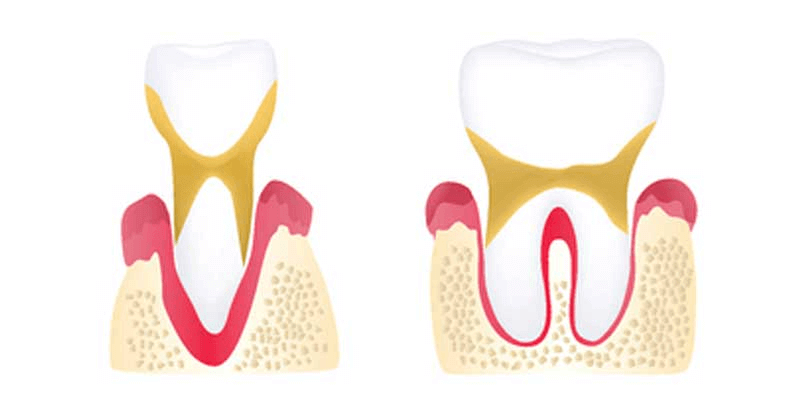
Advanced Periodontitis
A major cause of tooth loss in adults, advanced periodontitis is marked by painful abscesses that are the result of the infection spreading beneath the gums.
Frequently Asked Questions About Gum Disease
What does gum disease look like?
Some of the visual signs of gum disease include inflammation (swelling), redness, and bleeding. Over time, you may notice that your gums are beginning to recede or that there are spaces between your teeth that were not there before. Teeth may begin to shift out of position. Bad breath may be noticed.
Can gum tissue grow back?
Support loss around the teeth and gum recession will not grow back on their own. This can leave the exposed roots of your teeth sensitive and vulnerable to tooth decay. Chewing on the compromised teeth may become difficult. When gum disease is present, we recommend treatment directed at resolving the issues. If a recession problem is severe, we recommend gum grafting to restore the tissue that has been lost. If appropriate, we also can perform regenerative therapy to regrow lost tooth support as needed.
Can my teeth be saved if I have gum disease?
Yes, the majority of patients do not lose their teeth when they have gum disease. The best chance of preserving your teeth is if gum disease is identified early and treated promptly. This typically starts with scaling and root planing. Additional therapy would be applied in areas where support loss is more significant. Periodontal splints may be needed to secure teeth that are loose or shifting.
What is the main cause of periodontal disease?
Periodontal disease is commonly caused by poor oral hygiene habits and a lack of preventive dental care. It may also be associated with a number of common medications and health conditions such as diabetes. Often, there are a few different causes that contribute to the development of gum disease.
What happens if periodontal disease goes untreated?
Periodontal disease will not resolve on its own. Left untreated, it will continue to progress and eventually, it can cause abscesses, tooth loss, and bone loss in the jaw.